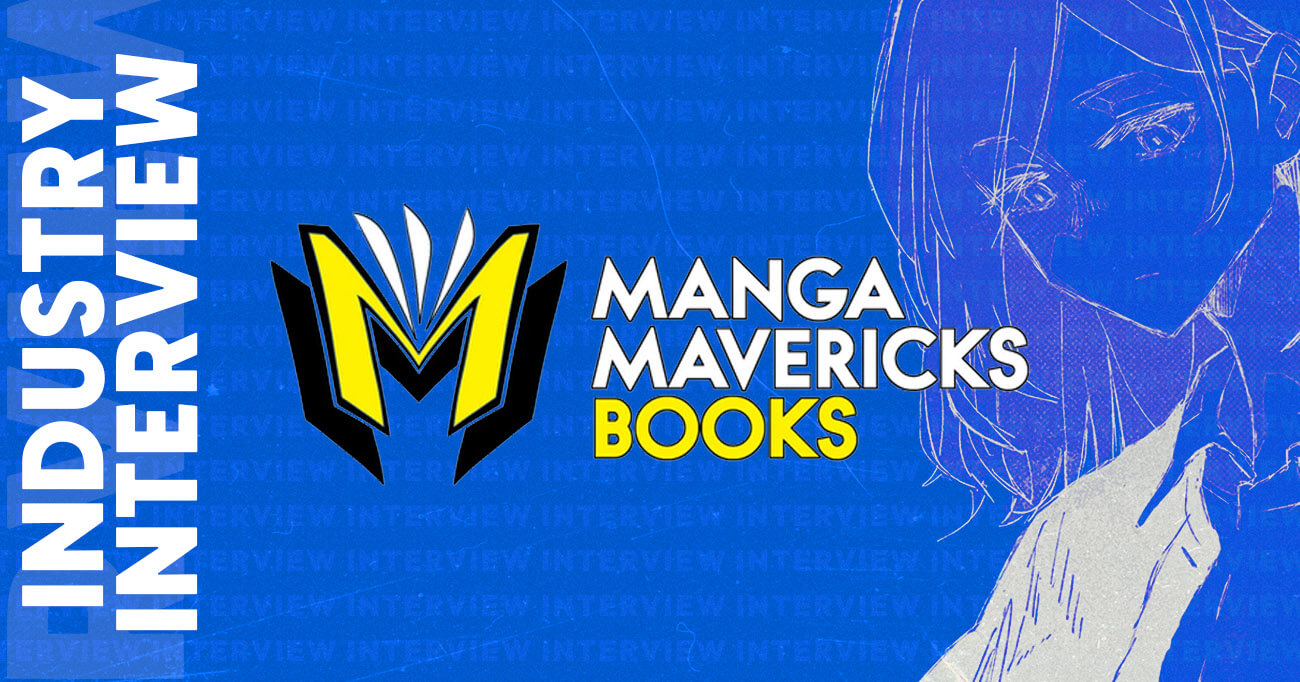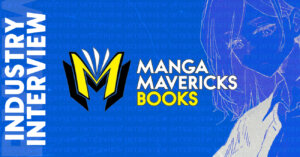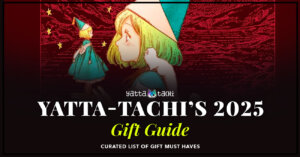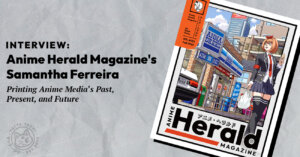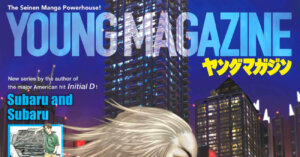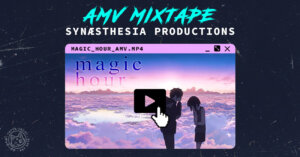On April 24, 2025, the news site and podcast network Manga Mavericks announced that they were entering the publishing industry with Manga Mavericks Books. This meant licensing three indie comics titles from Japan (BONDS, ALTERNATIVE[SELF LINER NOTE] and Zigoku’s Foreman) as well as distributing print editions in the United States of three titles from Red String Translations (Now No One Lurks Beneath the Snow, The Murderer and Her Runaway Desire and Senpai no Kohai.)
To learn more about this initiative, I reached out to the licensing director and publisher Varun Gupta as well as licensing coordinator and marketing director Mike Jokoh. We discussed various things including their industry origin stories, what it means for an artist to put their trust in you, and how you, too, can start your own manga publishing house.
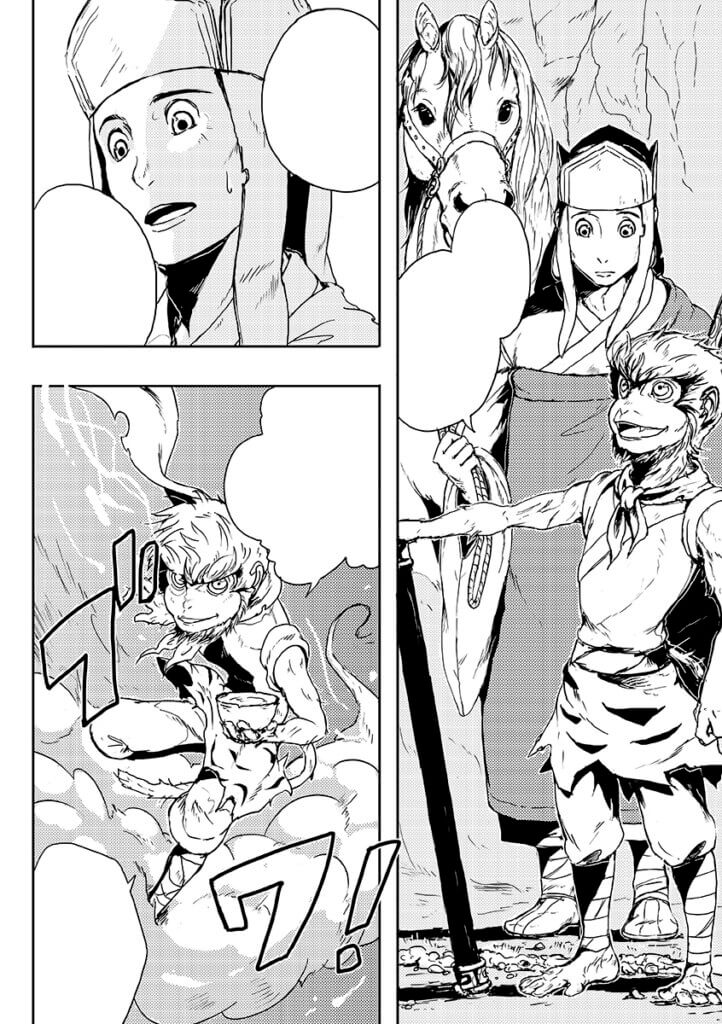
We infected the site and took it over from the inside
ADAM WESCOTT: When did Manga Mavericks first get together?
VARUN GUPTA: It was founded by my sibling Siddharth and our friend Colton as a podcast for the site allcomic.com in 2016. Once manga became the focus, the site was rebranded to Manga Mavericks. We infected the site and took it over from the inside.
MIKE JOKOH: I used to do fan translations for Gintama and Colton’s a huge fan; he used to do a podcast about it. He invited me on, and then after we did the episode, he outed me on Twitter.
I became friends with Siddharth and Varun at Anime Expo 2018. We’d talked on Twitter before that, but never in person. We were just strangers on the internet then.
GUPTA: I started talking to Mike shortly after the episode he did with Colton and Siddharth on Assassination Classroom. I thought, “He seems like a cool dude. Let’s reply to him on Twitter until I get his attention.”
JOKOH: I only got Twitter to stalk Tsubasa Fukuchi, my favorite manga artist, who created The Law of Ueki. This was way before Crunchyroll, so subtitling was done by college students when they had free time. I knew by stalking TV Tokyo’s website that the subs were way behind where Japan was. So I figured out exactly what part of the manga the last episode of the anime covered, and then bought those volumes from Kinokuniya along with a Japanese dictionary and went for it.
Fukuchi drew a series after Ueki in Shonen Sunday called Psyche Matashitemo, so I started buying the magazine and posting about it on Twitter. The series isn’t licensed, unfortunately. At the time, Fukuchi was having health issues. He would serialize a volume and then take a break, like Hunter x Hunter but more rapid. Sometimes it wouldn’t appear in the magazine at all.
So I said, “I have the rest of this magazine sitting around. Anybody want to hear about something that isn’t Detective Conan or Rumiko Takahashi? I’ll talk about those too, but there are other comics in this magazine besides those.” I got a decent reaction to that, so I started to blog. I also fell in with people who taught me about social media.
It was Varun who suggested that I should go to Anime Expo 2019 as part of the press. That wasn’t even on my radar. I thought, “This is just a stupid hobby, I have no credentials. They won’t let me in.” Lo and behold, they did! If it wasn’t for Colton and Varun, I don’t know what I’d be doing. I owe them a lot.
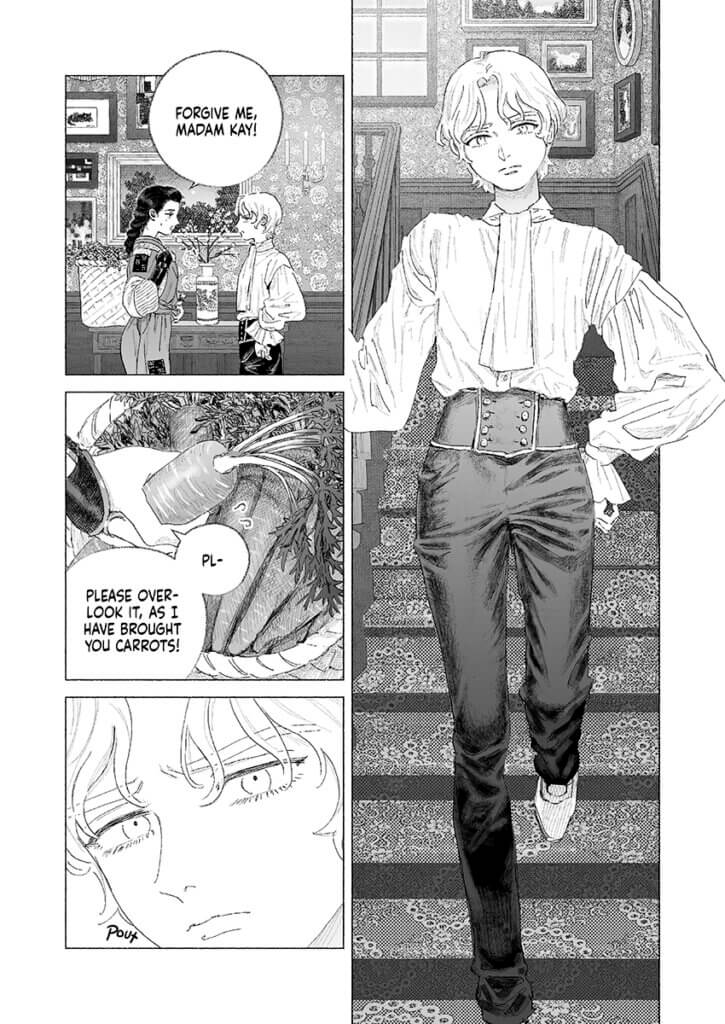
We should just make our own publisher
WESCOTT: Varun, do you have an origin story in that vein?
GUPTA: I used to show up on the Manga Mavericks podcast when they needed an extra voice around 2016. In 2018 I did a short-lived podcast hosted on all-comic.com where I’d talk about random manga. Eventually I fell off of it.
I got back into anime and manga journalism again when Viz started simulpubbing Demon Slayer. I was obsessed with it, so I wanted to write down my thoughts. That gave me other opportunities down the line, like being scouted by Toonami Faithful. I grew into a larger role at Manga Mavericks until I bought out the previous owner.
JOKOH: After we met in 2018, we stayed in touch but weren’t super close. We’d see each other at cons, meme at each other, but that was it. Then the pandemic hit, and we were all at home. That was our hot girl summer, where we started a bunch of podcasts together and our brand solidified. Varun had the idea of starting a Demon Slayer podcast together with Marion and myself. We also did a Shaman King one and a Shogakukan-based one. Then we stopped having time for all that, but we stayed close.
GUPTA: We still do the Demon Slayer one technically. It still does well, even though we only release an episode once in a blue moon.
WESCOTT: How long have you been plotting Manga Mavericks Books?
GUPTA: The initial plans started early last year in January. Before that it was a running aspiration between Mike and I. We’d say, “This manga looks cool, but it’ll never be picked up. We should just make our own publisher. Seems easy enough!”
JOKOH: Especially Shogakukan’s titles. That’s the goal here, I’m half-joking. We know people in the industry, we have decent capital, and people in the industry like us. We joked about it for a year or so, then we started talking to people like Deb Aoki.
It’s one thing to have an idea, but to enter the industry, we had to talk to people who were doing it. Like Matt Haasch from Star Fruit Books, Ed Chavez from Denpa and of course, Deb. Ed and Matt especially were very forthcoming in advising us what we should do and what we shouldn’t. We realized that our dreams were feasible.
![A page from ALTERNATIVE[SELF LINER NOTE]. A woman wearing a jacket and a guitar case slung over her shoulder stands inside of a subway car.](https://yattatachi.com/wp-content/uploads/2025/05/01-772x1024.jpg)
A suitcase worth of books
GUPTA: For clarification, we’re not going after works from major publishers. Our focus is indie manga and doujinshi because there’s a big gap in the market for it. Of course, Glacier Bay Books and Star Fruit Books are picking some of those titles up. But there are still a plethora of manga being sold at places like Comiket or Comitia that are just not being touched. Matt from Star Fruit suggested that we should get in touch with the artists we see online to find out if they’d be interested in an English release.
You used to be able to message these artists on Twitter, but now that site is a nightmare. While we were going through this process, though, I met our localization partner Victoria Esnard from Red String Translations. She suggested going to Comita, one of the big comic shows, this past February. There, we discovered many artists we weren’t finding online through Twitter or Pixiv. That helped us narrow down who we should reach out to and find alternative methods like emails and other contact forms that the artists would see, rather than via social media DMs, where everything gets drowned out.
I bought a suitcase worth of books from the convention, brought it back to the US, and narrowed down who I thought would work well in the English market. Also just stuff I thought was really cool because that’s what I wanted to publish.
JOKOH: I drafted the letter, Varun sent it to them, and that’s how the conversation began. Surprisingly, we didn’t run into too many problems. Most of the people we contacted were open to working with us. Some people weren’t as keen, but to give them credit, we were two foreigners they didn’t know.
GUPTA: People are either open to it, are cautious, or have some legitimate reason for why they don’t want to release it in English. Some of these authors want to keep their lives and work very private. This is something they do for fun. Even though there’s an opportunity to release it in English and there isn’t a huge cost liability on their end, it isn’t a priority for them, which is understandable. Other authors, though, can be extremely enthusiastic about it.
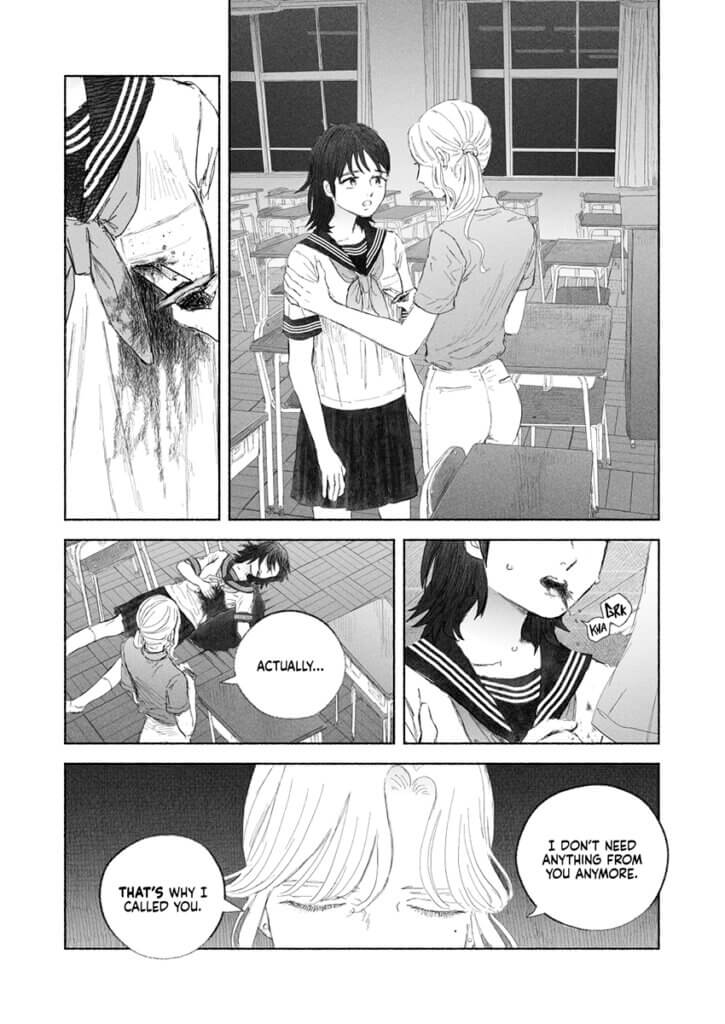
A smooth process
JOKOH: Receiving files and information from them has been very straightforward. If we ask for something they’re more than happy to give it to us. They make suggestions, we make suggestions. I can’t say there’s been any bumps in the road or things that we should have done differently.
GUPTA: To be fair, it’s been a smooth process because we’ve had so much help. We knew what questions to ask, what information to give. Even how to write up a contract, which was the biggest thing I was worried about. Thankfully, Matt from Star Fruit helped us with that, as well as the Japanese coworkers at my day job. Once we started sending contracts out to artists, I felt comfortable knowing we were doing things by the book.
WESCOTT: How about printing or design? Are you thinking about how you’re going to be formatting the book, or what paper you’ll be using?
GUPTA: Printing has been interesting with the tariff scares lately. Thankfully, as far as we know, manga is not yet affected by it. We’ve looked at printing domestically in the US rather than in Japan and whether to use the same printer the manga artist used. We’ve also learned more about the printing process like the proper terminology, what different paper weights and cover weights entail, and how to do file prep.
Victoria, who’s directing all our localization and project management, has been instrumental in ensuring all our files will be ready for print. She’s also taught us how to do it if we have to do it on our own. It’s been beneficial for us to have such strong expertise.
WESCOTT: Has Red String Translations been in charge of localization for all six titles, then?
GUPTA: Red String itself is Victoria’s localization service. For the sake of Manga Mavericks Books, Victoria is contracted as our localization director. All the costs of Manga Mavericks localization productions are handled by our team and we have final say on localization decisions.
We have a lot of trust in Victoria. We’ve left certain things up to her, like managing our localizers. But we have 100% visibility into how everything is operating and being produced. That said, the titles branded as “Red String” titles in our launch were fully produced by Victoria and her team without our involvement. We are just supporting marketing and distribution for those titles in the US.
We have the opportunity to expose Red String’s titles to a new market. You could get some of them already through the Kickstarters for Aneido’s books. But not everybody supported the Kickstarter or are near a retailer that’s selling it. Bringing these books to the US market, since we’re a US publisher, is something I’m very excited to do.
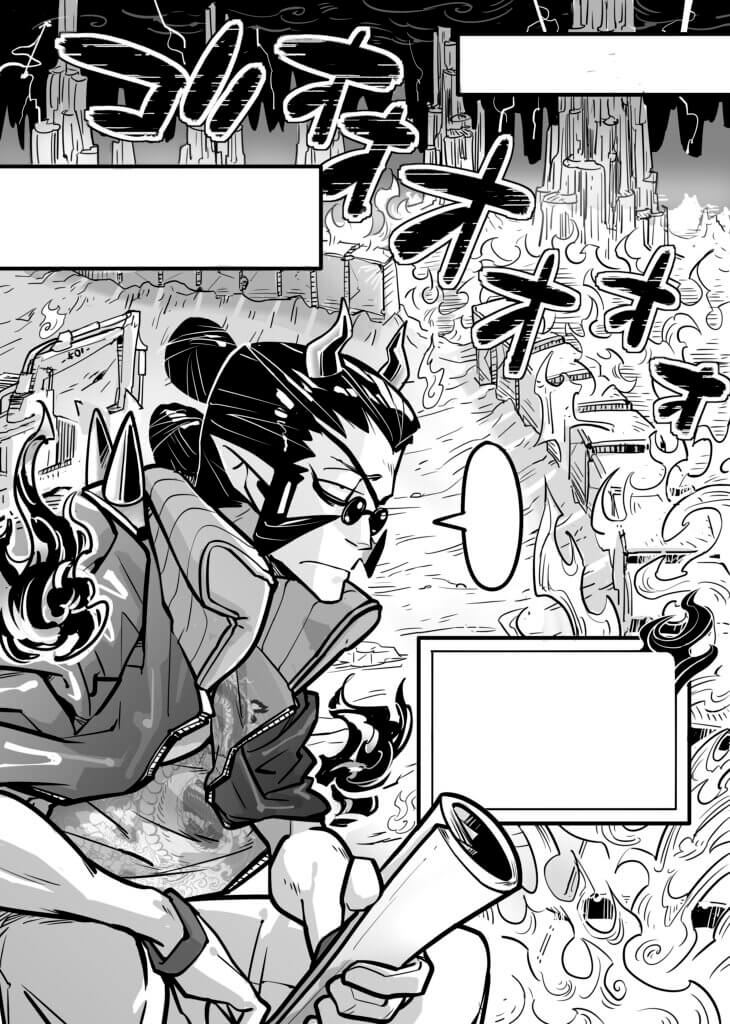
Stuff that we find interesting
WESCOTT: Right now, there are a couple of different small presses publishing manga, including some like PEOW that have just started licensing works. What distinguishes Manga Mavericks Books from this competition? Do you just pick titles you like, or do you have a certain aesthetic or theme in mind?
JOKOH: It really is just stuff that we find interesting. I don’t want to make it sound like there’s no rhyme or reason. But we’re looking at some titles that will scratch certain niches, as well as stuff that we think will have broad success. Our past experience might inform our decisions of what we’d pick up, but not by much.
GUPTA: The question of what makes us stand out is tough, because I don’t view these other manga publishers as competition. One indie publisher can’t pick up everything. We want to identify titles that we think have a unique voice, and fill a niche that cannot currently be filled by other publishers in the English market.
One that I want to shout out from our slate is Zigoku’s Foreman. It’s a manga/light novel hybrid, which you wouldn’t see from a big publisher due to its unique format. The series consists of manga chapters and also short stories. It also has a distinct art style that reminds me of Hazbin Hotel.
JOKOH: It has an outlandish premise and characters, but they’re also cool at the same time. If I had to bet on which of these books will hit, Zigoku is at the head of the pack.
GUPTA: Another thing to note about these titles is that they aren’t the size of a typical manga volume. They’re a lot bigger, A5 page size. The individual page quality is high. Zigoku will also include color pages that weren’t in 9banta’s original print release. We want to make these the highest quality releases they’ve had.
WESCOTT: Are these the standard 150-200 pages for manga, or shorter?
GUPTA: Zigoku’s Foreman is around 88 pages, while BONDS and ALTERNATIVE are around 40 pages each. That’s why, despite our licensing deals for these happening very quickly, we already feel comfortable announcing them. They’re already nearing completion in terms of the production because they’re a lot shorter.
![A page from ALTERNATIVE[SELF LINER NOTE]. A woman performs with her guitar at a live concert.](https://yattatachi.com/wp-content/uploads/2025/05/03-772x1024.jpg)
A feeling of pure awe
GUPTA: Manga of this length aren’t often published in the United States outside of what Glacier Bay and Star Fruit are doing. Perhaps because they aren’t the standard 200-page length volumes you expect from manga. But they’re still valid stories that are so unique. ALTERNATIVE, for instance.
WESCOTT: That’s the one I’m most excited for!
JOKOH: I did the first pass localization on that. It’s a story I enjoyed digging into from a translator’s perspective and as a reader. Definitely my favorite of the set that we’re coming out with.
GUPTA: I visited the artist’s booth at Comita. As I flipped through their book, I thought, “This is amazing!” It’s so creatively done from a draftsman’s perspective, with polished art. The music theme is compelling. I want to bring over titles like this that give you a feeling of pure awe.
JOKOH: Even if you aren’t interested in music, the story is about how to stay motivated when you have to separate your life between your creative brain and what will make you money to survive. That’s such a universal quandary that ALTERNATIVE will strike a chord with people.
WESCOTT: I don’t want to leave out your third title, BONDS, either, What stands out about it to you?
GUPTA: BONDS‘s creator ZENZO was a student of Takafumi Adachi, the creator of Beyblade: Metal Fusion. Adachi had a booth at the Comita I attended. So initially, I went over to visit him. Then I came across BONDS, and thought, “This looks really cool. I’m a sucker for Journey to the West.”
WESCOTT: Who isn’t?
GUPTA: We all saw how well Black Myth: Wukong sold. I was blown away by the artwork in BONDS. It’s also a compelling action-adventure short story. At that point, I decided to work out a deal with ZENZO-sensei. Again, it’s one of those stories that I thought would thrive in the English market.
JOKOH: Journey to the West is a story that we’ve seen a lot of. But I haven’t seen this take on Goku and Sanzo specifically, which focuses on the two of them before their adventure begins.
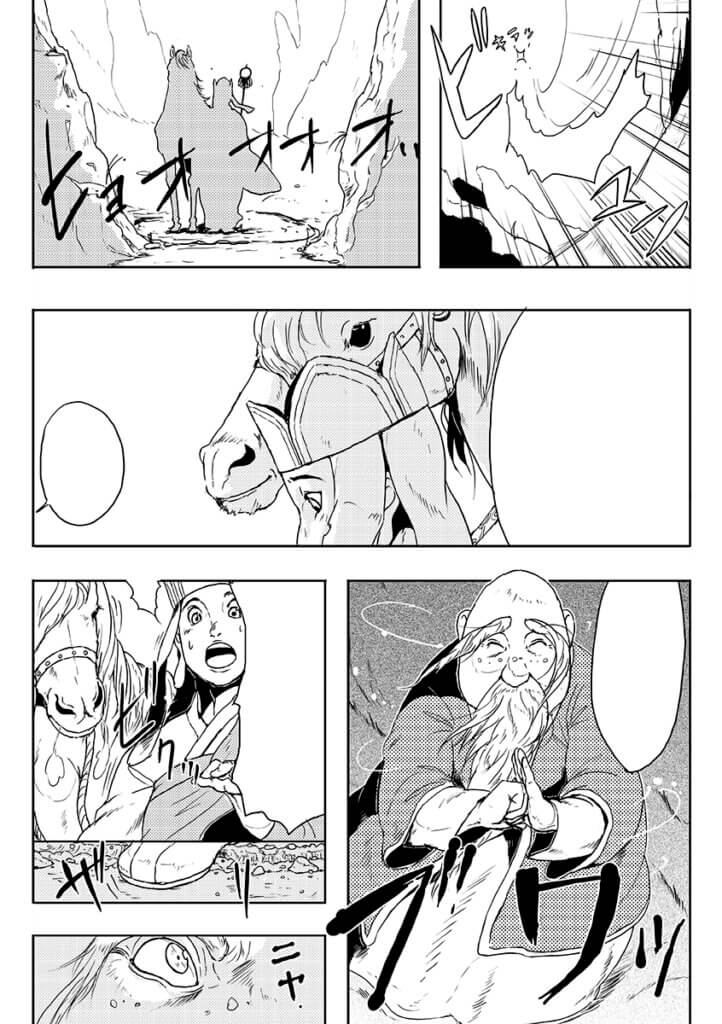
Framing the story
WESCOTT: I think it’s important that you brought up ZENZO’s creative lineage in this conversation and in your press release. Since you both started out covering the industry as journalists, you have the understanding, but also the willingness to put it in a way that folks on the outside will understand. Not to mention the faith that if you put it out there people will read it.
Last year, I had a conversation with somebody who told me, “It’s frustrating that people love manga and anime but don’t care about the people who make it.” While that may be true, part of me wants to believe that your audience will care so long as you phrase things in a way they understand. Do you think you have a responsibility as a publisher to frame these stories in a way that does justice to the people who made them, and makes their work accessible to a wider readership?
GUPTA: Manga artists are often very private people. But I think it’s good to give at least some context for what they are about, what their passion or story is. Our initial three titles were all published in 2019. That wasn’t intentional. But these are stories that remain compelling despite being six years old. Their artists have been working for such a long time, whether they draw in their free time or full time. It’s important to give them a face so the reader can connect with them.
JOKOH: People crave comparisons. You’re more likely to get somebody to go do or see something if you compare it favorably, or sometimes not favorably, to something else. Like the connection between Adachi and ZENZO, even if it’s not something many people know or if they wouldn’t make that association themselves.
I could tell you about a really exciting comic, and some people might think that sounds interesting. But if I say, “it’s similar to One Piece,” that will turn more heads. Even if I say, “it’s nothing like One Piece,” or “it’s by an author inspired by something else you like,” that would make a difference. In the press release, I included the line “if you’re a Journey to the West devotee, or if you just know That Goku.” That’s tongue in cheek, but it’s a way to branch out into learning where he came from. Obviously Akira Toriyama was inspired by that story to make the Goku that everybody knows.
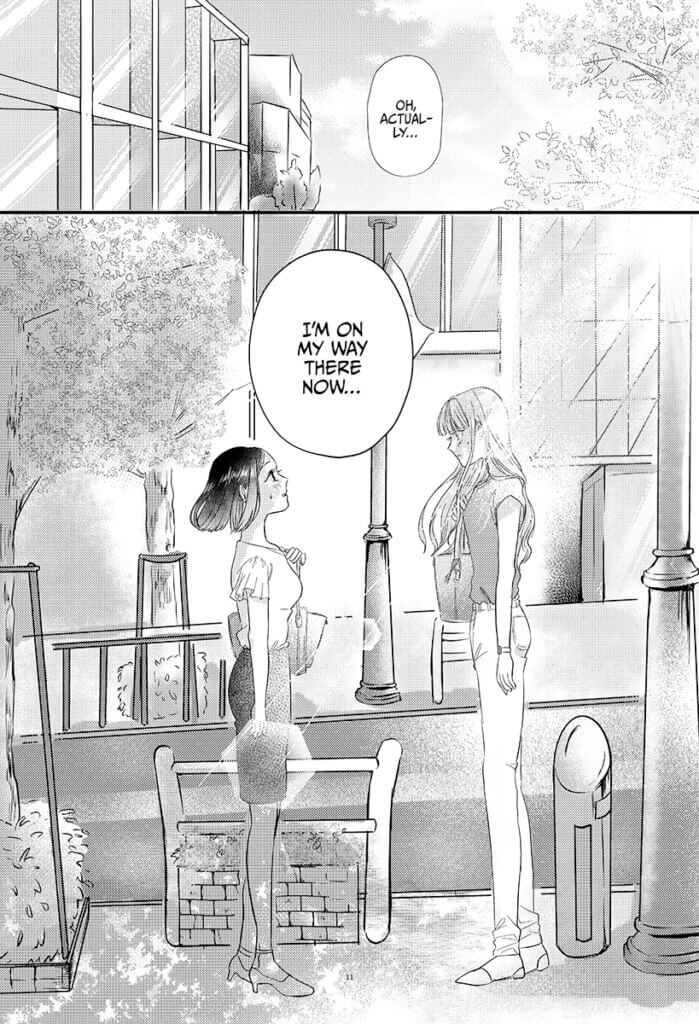
They’re taking a chance on us
WESCOTT: You brought up risks earlier in terms of printing and tariffs. I know that we live in an uncertain world. Mike lost his day job recently, right?
JOKOH: Yeah. I worked as a fed, and unfortunately, I was one of the folks laid off because of that. The outpouring of support from the Manga Mavericks Books announcement and from other people who know us has been humbling. We were friends with people in the industry, but for so many people to show up is amazing. That said, I have to tell people that this isn’t a full time thing. I need help. Hire me, please!
GUPTA: None of us in this company are doing this full time. We all have day jobs that are our main source of income. Even the seed funding from this company is mostly my savings that I’ve gotten from my work at Prime Video. It is a big financial risk and time commitment. Plus, we still have to live our lives and keep afloat.
WESCOTT: Do you feel responsible to the artists you’re working with to get their work out there?
GUPTA: One hundred percent. They’re taking a chance on us being able to do their work justice. These stories are their babies. Giving that to someone else to take care of and manage is scary. I don’t think a lot of artists would be willing to do that. especially for a small publisher like us. I’m grateful for them trusting us with this, and I know the entire team wants to do justice to their work and spread it as much as we can.
WESCOTT: I was looking around on the English language internet beforehand for evidence that these three titles existed. I’m sure they’re all over the Japanese internet. but I couldn’t find any information on sites like Baka-Updates Manga. Your press release is the only evidence I could find in English that they exist. Which is an amazing responsibility, that you’re sharing these with international audiences, even though they have readers in Japan.
GUPTA: That was one thing that was very tough when researching these titles. Even on the Japanese side, you have to do a bit of digging. These are self-published works. Zigoku’s Foreman is the only one that has a wider ebook distribution in Japan, and that only happened recently.
For a lot of doujin, that’s a common problem. It’s hard to cross the language barrier. Even for a lot of books from Glacier Bay, it would be difficult to find any information about them online because there wasn’t an English-speaking advocate for them.
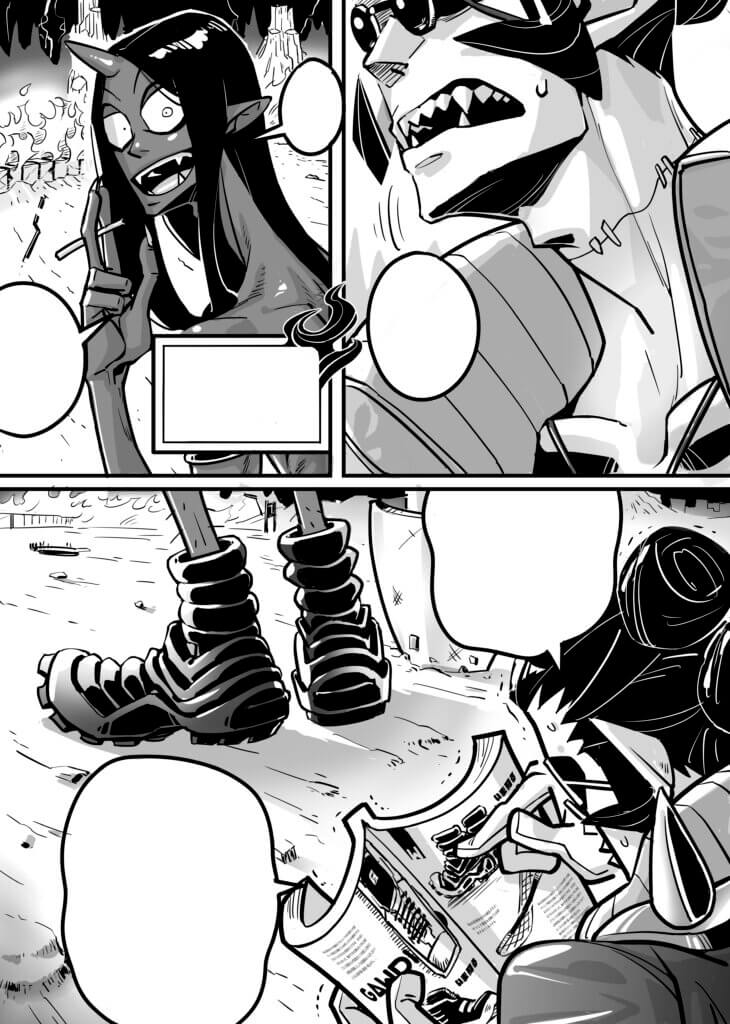
We’ve leveraged this much trust
GUPTA: If we have two big inspirations for this publisher, it would be Glacier Bay and Star Fruit Books. They are our north stars. We want to be able to deliver the same level of quality that they do. Matt from Star Fruit is a good friend of ours. He constantly gives us advice despite us asking a lot of dumb questions. I want to take the trust that he’s given me or that other people have given me, and deliver something that’s worthwhile to readers.
JOKOH: Manga Mavericks as a brand has built up a lot of trust over the years. I’ve only recently come into that orbit, but I’ve seen the shows that they’ve done and the guests that they’ve been able to grab. We’ve leveraged this much trust. We’re spending it now. We don’t want to overspend on it.
GUPTA: One thing I was worried about, to be transparent, is that these will be more expensive books than you’d buy at a Kinokuniya or Barnes and Noble. But from the reception that we’ve seen from people, they understand going in that these will be high-quality releases. We’re not just releasing something on cheap magazine paper, but putting our money where our mouth is with the quality. We want to invest the time and resources to make these books that people want to show off on their shelf.
I want to shout out the quality of Red Strings Translations’ books. There are pictures of those out there from the Kickstarter, and our release is identical to their release of Aneido’s work. That book is high quality. B5, so it’s big. The page quality is good. There’s french flaps for Now No One Lurks Beneath the Snow too. It’s as high quality a release as you can give it.
WESCOTT: So they’ve been a source of inspiration as well.
GUPTA: Red String has influenced us to invest in quality. I think customers, especially avid manga collectors, are willing to spend money if that quality is there. That goes towards localization too. We’re trying our best to pay our localizers the best rates that we can possibly give them. Even for those localizers that we’ve signed, I’ve told them, “if you need a better rate, please tell us, because I want you to be paid fairly.”
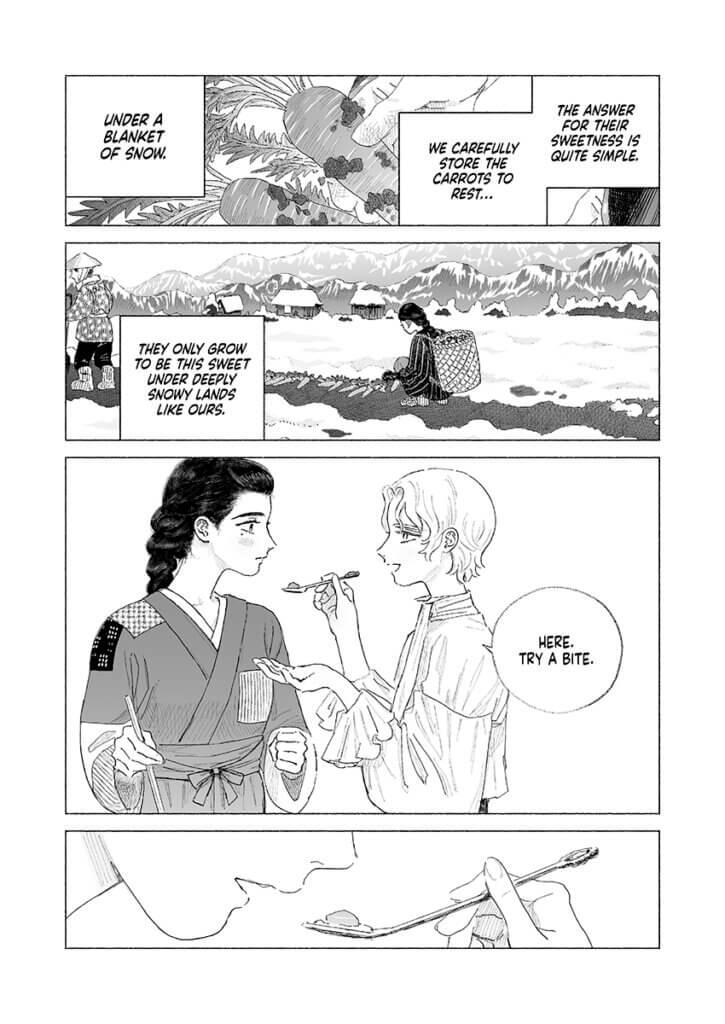
They’re our friends
WESCOTT: Are you hiring letterers and other freelancers as well?
GUPTA: Victoria is personally lettering our first three titles. One of our translation associates, Ethan Cook, is translating Zigoku. Mike did the first run on ALTERNATIVE, and then we had it reviewed by several native speakers, as well as Victoria, to ensure the translation was accurate. We also got Robert Harkins, who some people might know for various projects that he’s done in lettering and translation. For Kodansha, he’s doing Drops of God: Mariage, and then he did the Seven Seas physical release of Tokyo Revengers. He’s one of the nicest guys, if you ever meet him in person. His work on bonds is also impeccable.
JOKOH: Which again goes to show just how well people know Manga Mavericks as a brand. We’ve met these people at cons, and we’ve talked to them. So the logical next step of “Hey, can you do this for us?” is very straightforward. We trust them and they trust us.
GUPTA: These aren’t just people we’ve become acquainted with. They’re our friends. Some of them we’ve known before we entered the industry. It’s very important to us that they are visible. All of them are credited in the books as well as on the product pages. I want them to be paid their dues, because they are doing difficult work. People underestimate how difficult translation is and especially how difficult lettering is. I’m grateful that they’re willing to work with us and that they trust us to be a good partner to them.
We are actively negotiating more titles still. The production timeline has not paused at all. So we’re hoping to announce more titles over the coming months, at least by summer. I’m confident that we’ll continue to grow.
JOKOH: I’m excited to see people’s reactions to our upcoming announcements. There’s at least one artist we can’t believe is talking with us. That one we’re holding close to our chests, because depending on how that goes, it could open windows to all kinds of things.
GUPTA: That is our highest priority title that we have in the future pipeline. I can’t wait to talk about it more.
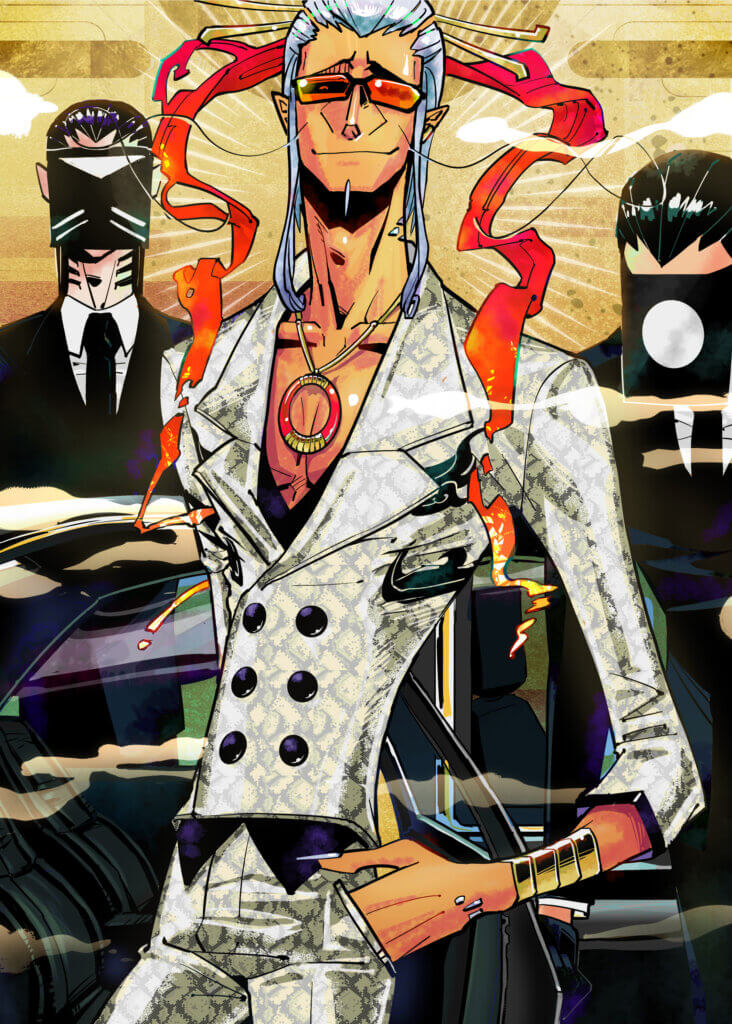
We weren’t born with this
WESCOTT: Do you have any final last words you’d like to leave our readership with?
JOKOH: I won’t say that this project has been easy, because it’s a lot of work and a lot of capital. But it happens that we have the right people, the right connections, and the right capital to pull this off. We weren’t born with this; we ended up learning it. If you do have the opportunity, and you reach out to people in the industry, a lot of them are friendly and will talk to you about it. Even if you don’t want to go into publishing yourself, and just want to learn more about the process.
WESCOTT: So if you’re a manga blog out there thinking, “Maybe I, too, should start a publishing company,” it might not be possible immediately, but it’s not impossible. And it might be possible if you’re in the right place and the right time with the right people.
GUPTA: You can’t go in cold turkey and license something, but don’t think that it’s an impossibility. It comes down to meeting the right group of people, getting the right resources, and having the passion for it. Finding an author you love that you think you could work with. Being able to present why you should be that person to license that work, or how you could help expose this author to a wider audience.
I used to think that in order to get into manga publishing, you had to go through a traditional route of working for a giant publisher. Nowadays, that’s not the reality. You have so many ways to communicate and collaborate with teams online. You have cross-promotional teams that work around the world for some companies. You don’t have to work in a traditional corporate setting anymore to do this type of work. People from a lot of different backgrounds could do this if they wanted to, so long as they have the expertise.
JOKOH: As much of a cesspit as social media can be, it has caused a paradigm shift in how things are done. Even in Japan, manga artists aren’t going through that corporate process where you have to be recruited by Shueisha or Kodansha. A lot of them are just going on Pixiv. In some cases, they’ll put it up on their personal Twitter, and one of those big companies I just mentioned will say, “Hey we like this, can we publish this for you?”
There’s been discussion with manga editors at Shogakukan where the question has been asked, “Do you think your job is necessary anymore when people can sidestep the process?” Although the answer to that question is complex, they did acknowledge, “Yeah, that’s true.” Nowadays, the job of a manga editor is answering the question, “If I can just publish something without you, why should I bother going with you guys?”
So we don’t have to work for a big publisher to get things out there. We do have the serendipity of having so many things fall into place. But I don’t think any obstacle is insurmountable if you have time, effort, or capital to spend, and if you love the artists.
You can find Varun Gupta, Mike Jokoh and Manga Mavericks itself on Bluesky as well as the Manga Mavericks website & online store.
Article edited by: Cy Catwell
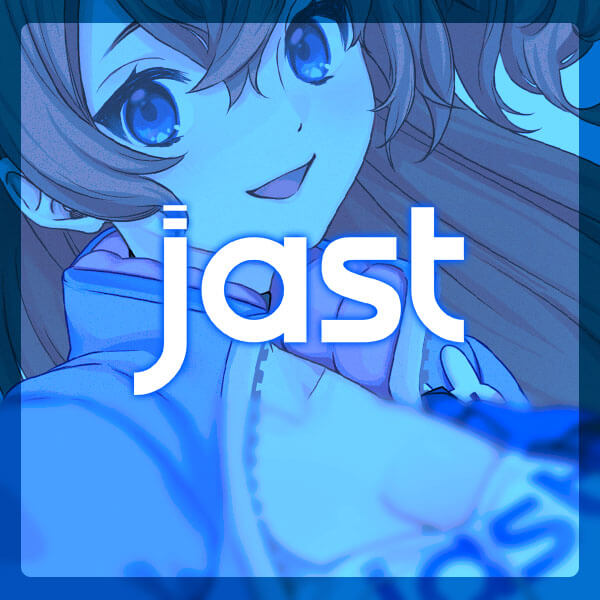
Featured Sponsor - JAST
The sweetest romance and the darkest corruption, the biggest titles and the indie darlings; for visual novels and eroge, there's nowhere better.
Big thank you to our supporters
From their continous support, we are able to pay our team for their time and hard work on the site.
We have a Thank-You page dedicated to those who help us continue the work that we’ve been doing.
See our thank you page